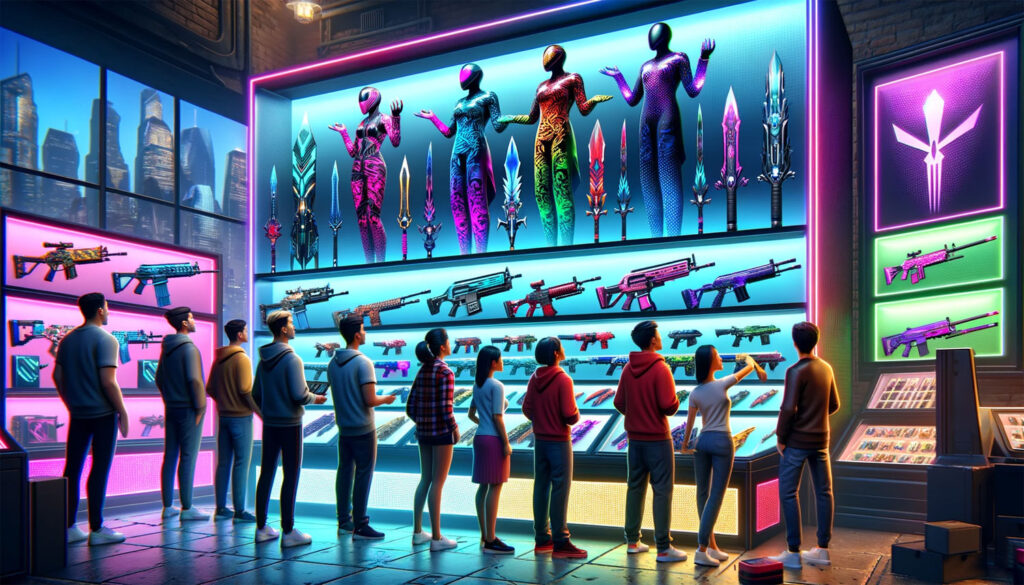Selling game skins is a great way to monetize your talent via gaming UGC. These skins, virtual items that alter the appearance of characters or items in video games, have become a significant part of the gaming culture.
People purchase game skins for various reasons. Skins offer a means for players to express their individuality and tastes. They also serve as status symbols, particularly when rare or hard to earn, booting the player’s prestige within the gaming community.
Aesthetically speaking, skins add visual appeal and freshness to the gaming experience. For many, it’s also about being part of the gaming culture, aligning with trends, or showing support for favorite clans or game developers. Some players view skins as collectibles.
Additionally, for content creators and streamers, skins provide varied and visually engaging content for their audiences.
Creating skins is a creative process. But what happens after that? You want to sell them. Where should you sell your skins? Here are a few available platforms and the pros and cons of each.
Direct Peer-to-Peer (P2P) Sales
P2P skin selling platforms offer you autonomy, since you have full control over pricing. There’s a sense of community, because players interact directly with each other. These are well established platforms that don’t require any serious setup on your side, but there’s a scam risk, since there’s no regulation. Also, everything relies on mutual trust, which is nice and all, but that also means there’s no guarantee you’ll get paid.
Third-Party Marketplaces
Marketplaces offer you access to a wider audience and a larger pool of buyers. They have advanced features like price history, rarity filters, and skin previews. Places like DMARKET, for example, offer various payment methods, from PayPal to Skrill, which makes the whole process easy and convenient.

However, marketplaces usually take a cut of the sales and you should adhere to their terms of service, or you’ll get banned. Again, it’s a managed platform, and as such – is not under your control.
In-Game Trading Systems
This is the first choice for some skin makers, especially when taking their first steps. These trading systems offer secure transactions with enhanced security and fraud protection. They are easy to use and are integrated within the game environment.
On the other hand, they have limited scope and are restricted to in-game items and currency. There are also trade restrictions like cooldown periods or trade limits. You can’t go wild, in short.
Auction Platforms
Sometimes you want to throw your skin into the market and see what kind of offer you can get. This is where auction sites, such as SkinBid, come in. These sites give you a chance to fetch higher prices for skins, based on demand. It’s also an exciting experience, since the bidding process can be thrilling and sort of addictive, too.
Of course, nothing is certain when you go for an auction. There’s no guarantee of sale or desired price. It’s also time-consuming: auctions can take time to conclude, you might not sell and you’ll need to upload your item again in order to start a new bidding, etc.
Social Media and Forums

Selling your skins on social media offers you a way to get personalized deals with people you know and trade with communities you trust. This way, you can also build a good reputation within community forums.
The cons include a limited reach, since you are dependent on the size of the forum or social group. There’s also vulnerability to fraud – social platforms and forums are more exposed to scams.
Setting Up Your Own Website for Skin Sales
This is really the pro version of skin sales. If you build your own website, you get complete control over sales, pricing, and presentation. It’s your own domain, where you are the king (or queen) of the castle. If you are planning to make UGC into a career, your own website helps with brand building and gives you an opportunity to establish a personal or business brand in the gaming community. You get to design the user experience and features to suit specific needs.
Still, managing what is, essentially, your own e-commerce platform isn’t easy. There’s the technical aspect, which requires web development and maintenance skills – even if you are using the easiest CMS like WordPress or Shopify. Also, there’s money involved here. You need to take into account that there’s an initial investment for website setup, hosting, and security measures. In fact, you pay for hosting and a domain name for as long as you have a website, even if you don’t sell anything.
You also need to put serious effort into marketing, since you are responsible for driving traffic and building a customer base. You can do that with paid advertisements or SEO efforts, but any way you choose takes time and money. There are also legal and compliance issues – you will need to navigate legalities related to digital goods sales and potentially game publisher policies.
